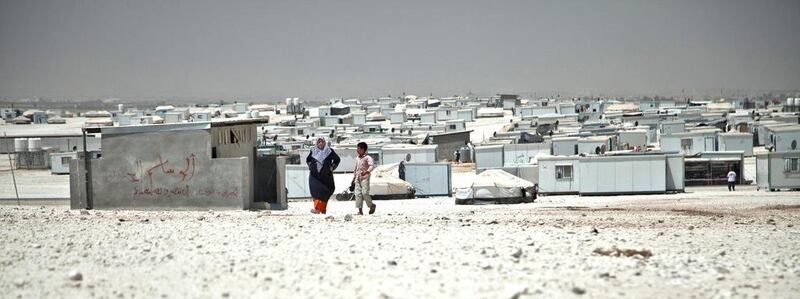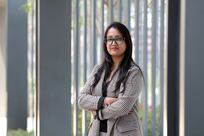Maamun Al Wadi is just one of almost four million Syrian refugees who have fled the country in what the United Nations describes as the worst crisis of its kind in a generation.
He runs a small mobile-phone shop in Jordan’s Zaatari refugee camp, repairing handsets, charging batteries and restoring the only connections its inhabitants still have with Syria.
Al Wadi is at the centre of Oxfam and the European Union's upcoming documentary film District Zero. The title is a reference to the millions of people who have been displaced and are stuck in the limbo of the camp because of the war.
People from all over the camp come to his shop and it is through the contents of their smartphones that the audience sees how much their lives have changed: from their old familiar daily routines to the horrors of war, destruction and flight.
“Presenting a snapshot of the day-to-day life of a refugee, we aim to show that behind every number and statistic about the refugee problem, there is a story to be told,” says Pablo Tosco, from Cordoba, Argentina, who directed the film with Pablo Iraburu and Jorge Fernández.
The film was shot in March at the camp, 10 kilometres east of Mafraq, which with 81,000 refugees is the second-biggest in the world, according to the United Nations High Commissioner for Refugees. Crew members lived with refugees during filming.
“When you have the opportunity to live with refugees, you discover that they are like you, people with a normal life who one day were forced to flee their homes,” Tosco says. “This could happen to any of us any day. And it is impressive to discover what’s inside the smartphones of the Syrian refugees.”
One of the most touching moments in the film comes when Al Wadi decides to buy a printer so the camp’s residents can print out copies of their photographs.
The documentary will be screened during the Expo Milano 2015 on Sunday, presented by Oxfam and Echo, the European Commission’s office for humanitarian aid and civil protection department. The official international premiere will follow at the San Sebastian Festival in Spain, which runs from September 18 to 27. It will then tour more than 50 film festivals around the world.
The film is part of Oxfam and Echo’s EUsaveLIVES – You Save Lives campaign to raise awareness of refugees and displaced people, not only in Syria but also in South Sudan and the Central African Republic.
In addition to the refugees who have fled the country, almost eight million people have been displaced inside Syria.
There are more than 59 million refugees and displaced people worldwide, according to last year’s UNHCR Global Trend report. Oxfam communication officer Laura Hurtado says that the charity is trying to make sure the documentary reaches as many people as possible.
“We have vigorously campaigned for the rights of all people affected by these crises, to ensure that their voices are heard, to deliver a strong humanitarian response and for governments around the world to use their influence to find a political solution to this crisis,” she says.
artslife@thenational.ae





